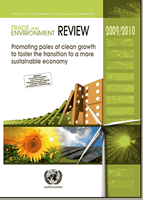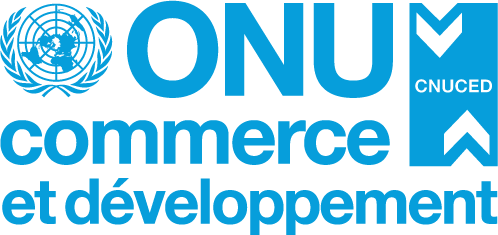
While several rapidly industrializing developing countries have not seen a major slump in their growth by the recent economic and financial crises, UNCTAD´s Trade and Environment Review 2009/2010 (TER 09/10) focuses on the 140 plus low-income and least developed countries, which have not caused the economic, financial, climate and food crises (they account, for instance, for less than 10% of energy-related GHG emissions of all developing countries), but have to bear the full brunt of these crises.
How can they effectively mitigate these inter-related crises while transiting to a qualitatively and structurally different growth and development model?
The TER 09/10 singles out three areas of sustainable, "green" growth that are of particular and strategic importance for the low-income and least developed countries:
- Enhancing energy efficiency, often implemented in combination with material and resource efficiency;
- Mainstreaming sustainable agriculture, including organic agriculture; and
- Harnessing the use of off-grid renewable energy technologies for sustainable rural development.
The term clean and sustainable growth "poles" is very much linked to the catalytic role of these three areas for other sectors of the economy. The "poles" have a magnetic stimulus effect with a more pronounced focus on qualitative (economic, ecological and social) growth features.
These potential poles of clean growth reconcile the development and global climate change mitigation imperatives, create opportunities for more and better jobs, lucrative markets, added value, and multiple social and environmental benefits, assure energy security, and foster local technological and institutional capacity-building.
Part of the challenge in developing and exploiting poles of clean growth in low-income and least developed countries involves concerns about affordability and up-front costs.
Overall, the three clean growth poles proposed by TER 09/10 offer, on the one hand, significant energy/material/resource cost-cutting potential (in some cases to the extent of negative costs); on the other hand, they offer an income-generation potential that makes the investment either virtually self-financing, thereafter resulting in self-dynamic growth, or so lucrative that attracting appropriate funding - including from private sources - should pose few problems.
In other words, the suggested growth poles are economically viable and lucrative even under currently imperfect or non existing internalization of environmental costs or avoided damage. However, there are significant market barriers and counterproductive or inadequate policies in place that prevent the crowding in of private capital into these profitable, socially attractive and environmentally sustainable investments, which will have to be overcome in the medium term.



